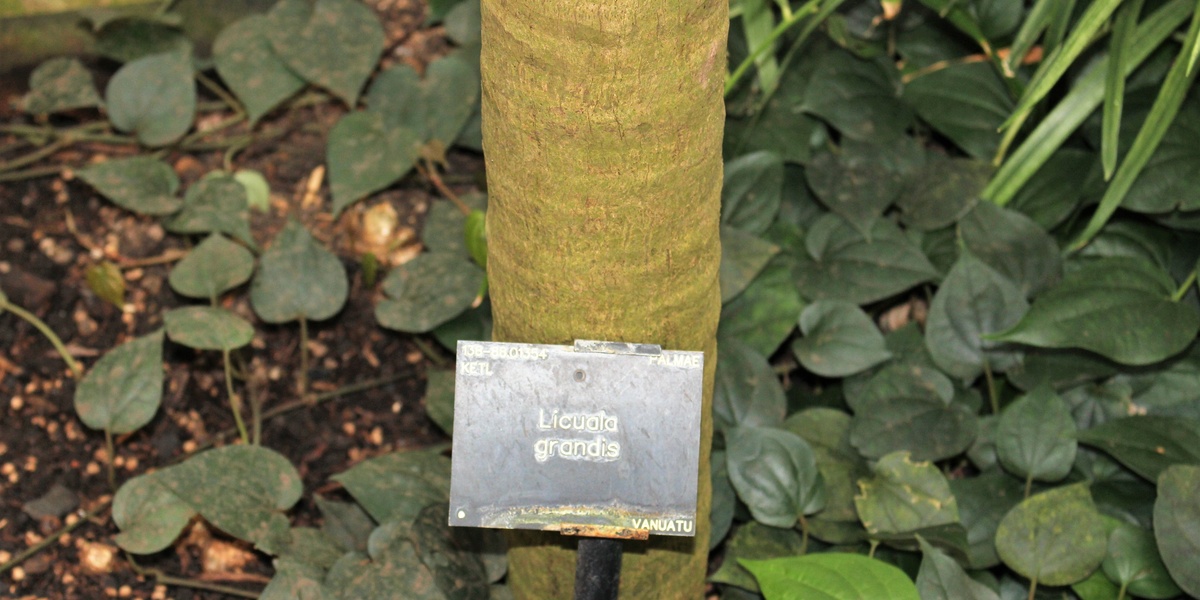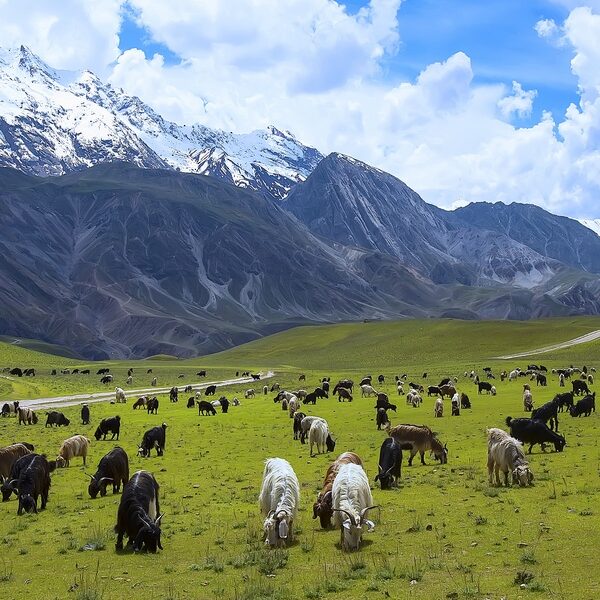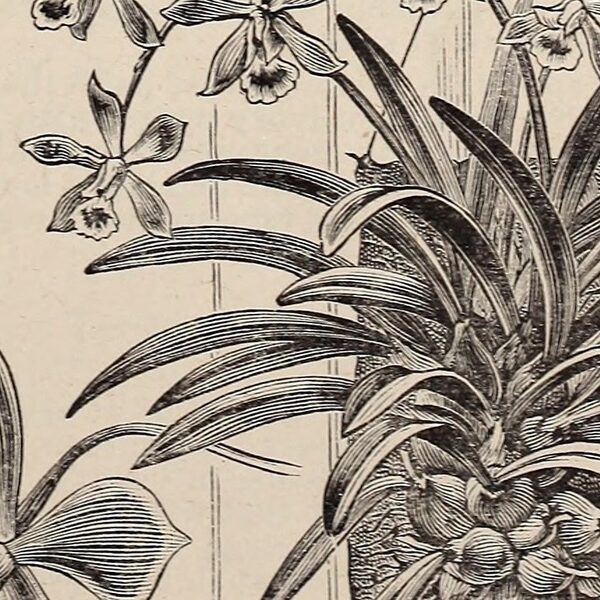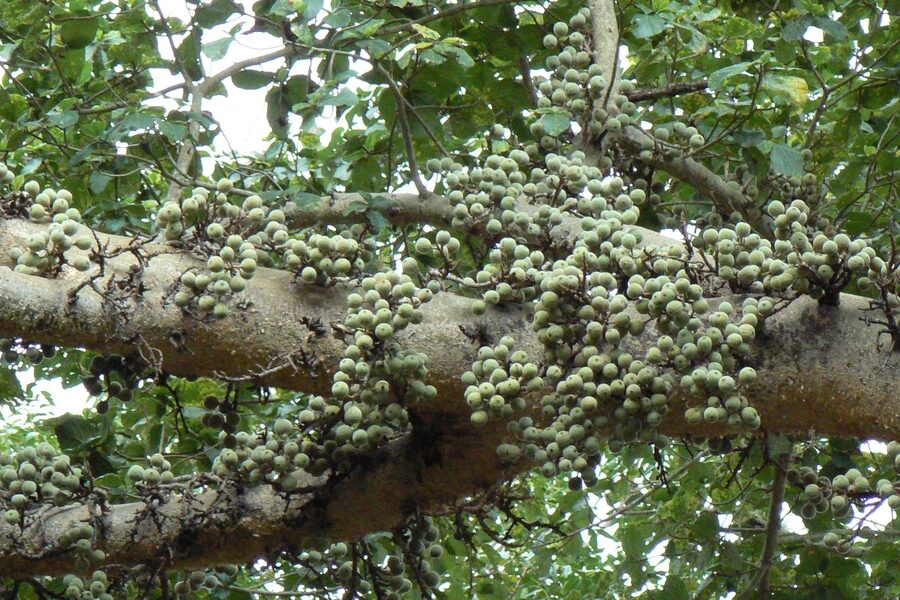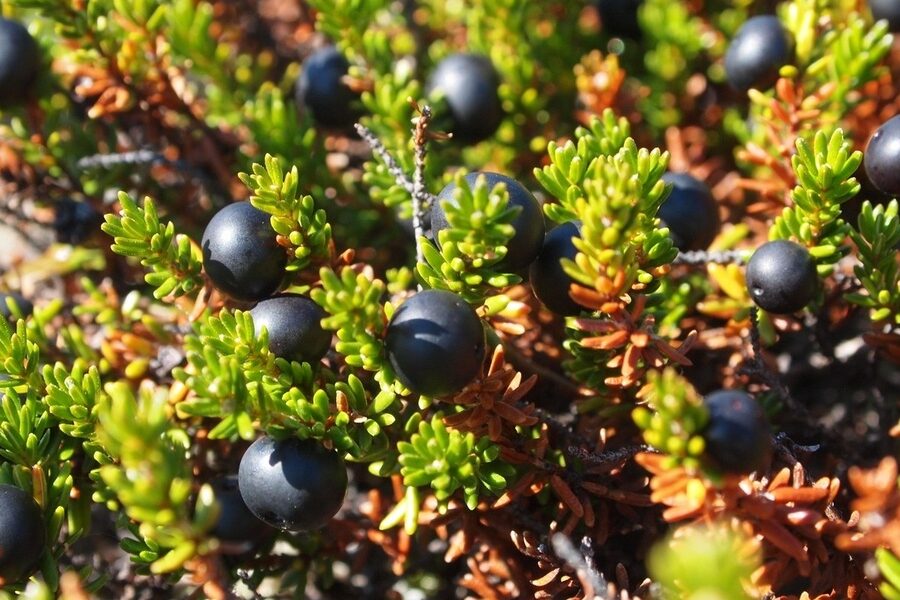Vanuatu, an enchanting archipelago in the South Pacific, boasts an incredibly rich and diverse natural environment. Its volcanic origins and isolated location have fostered unique ecosystems, home to a fascinating array of flora that thrives across its islands, from lush rainforests to coastal fringes.
Delving into this botanical richness, you’ll find a comprehensive guide to Plants of Vanuatu in the list below. We’ve compiled 50 distinct species, showcasing an impressive range from the iconic Banyan Tree to the versatile Wild Yam. For each entry, you’ll discover its Scientific Name, typical Habitat, and any Notable Use, providing a detailed look at this vibrant plant kingdom.
What makes Vanuatu’s plant life special?
Vanuatu’s isolation in the Pacific has led to a significant degree of endemism, meaning many plant species are found nowhere else in the world. Its diverse microclimates, ranging from volcanic slopes to coral atolls, support a wide array of ecosystems. This contributes to a rich biodiversity that includes both culturally significant and ecologically vital flora, shaped by centuries of natural evolution.
Plants of Vanuatu
| Common Name | Scientific Name | Habitat | Notable Use |
|---|---|---|---|
| Kava | Piper methysticum | Cultivated in gardens and clearings | Root is ground and mixed with water to create a traditional, relaxing ceremonial drink. |
| Nangai Nut | Canarium indicum | Lowland rainforests and cultivated areas | Highly prized edible nut, eaten raw or roasted; a growing commercial export. |
| Banyan Tree | Ficus spp. | Throughout the islands, often in villages | Sacred meeting place (‘nakamal’), home to spirits in traditional belief, bark used for fiber. |
| Sandalwood | Santalum austrocaledonicum | Dry forests and coastal areas, particularly on Erromango and Santo | Highly aromatic heartwood is harvested for incense, perfumes, and carving; historically a major trade item. |
| Tamanu | Calophyllum inophyllum | Coastal forests and beaches | Oil from the nut (‘Tamanu oil’) is a powerful traditional medicine used for skin ailments, sores, and wounds. |
| Coconut Palm | Cocos nucifera | Ubiquitous in coastal areas and villages | Extremely versatile: provides food, drink (coconut water), oil, fiber (‘coir’), wood, and leaves for weaving and thatch. |
| Breadfruit | Artocarpus altilis | Cultivated in villages and gardens | A staple food source; the starchy fruit is roasted, boiled, or fermented and stored in pits. |
| Vanuatu Kauri | Agathis macrophylla | Montane rainforests, especially on Erromango and Santo | Source of high-quality timber and resin; ecologically important as a massive emergent tree. |
| Island Cabbage | Abelmoschus manihot | Village gardens and cultivated plots | Nutritious leaves are a very popular green vegetable, often cooked in coconut milk. |
| Natangura Palm | Metroxylon warburgii | Swampy areas and lowland forests | Durable leaves are the primary material for traditional roof thatching, lasting for many years. |
| Wild Yam | Dioscorea alata | Forests and cultivated clearings | A vital food staple; tuber cultivation is a prestigious activity for men, central to many cultural ceremonies. |
| Taro | Colocasia esculenta | Wet, swampy gardens and stream banks | Corms (underground stems) are a staple carbohydrate, often pounded into a paste called ‘laplap’. |
| Burau | Hibiscus tiliaceus | Coastal areas and riverbanks | Bark provides strong fiber for making rope, skirts, and cordage; leaves used to wrap food for cooking. |
| Fish Poison Tree | Barringtonia asiatica | Sandy shores and coastal forests | Seeds are grated and used to stun fish in shallow water, a traditional fishing method. |
| Noni | Morinda citrifolia | Open coastal areas and forest edges | The pungent fruit is a powerful traditional medicine used for a wide range of ailments. |
| Pandanus | Pandanus spp. | Widespread, from coasts to mountains | Leaves are used for weaving fine mats, baskets, and sails; some varieties have edible fruit. |
| Nakamol Tree | Dracontomelon vitiense | Lowland rainforests | Wood is favored for carving ceremonial kava bowls; the tree also produces a sour, edible fruit. |
| Natora | Terminalia catappa | Coastal areas | Edible kernel inside the hard fruit tastes like an almond; leaves used in traditional medicine. |
| Nandao | Endospermum medullosum | Lowland and secondary forests | A fast-growing pioneer tree providing a lightweight, pale timber used for construction and canoes. |
| Kwila | Intsia bijuga | Lowland and coastal rainforests | A highly valued and durable hardwood timber, resistant to termites, used for house posts and carving. |
| Taun | Pometia pinnata | Lowland rainforests, often near rivers | The sweet, juicy fruit, similar to a lychee, is a popular seasonal snack. |
| Nakangas | Cordyline fruticosa | Gardens and ceremonial sites | Has deep cultural significance; leaves are worn in ceremonies, planted to mark boundaries, and used in ‘kastom’ medicine. |
| Tree Fern | Cyathea spp. | Moist, shaded rainforests, from lowlands to mountains | Trunks are used for garden walls and orchid mounts; young fronds of some species are edible. |
| Vanuatu Fan Palm | Licuala grandis | Understory of rainforests, especially on Espiritu Santo | Endemic to Vanuatu, it is now a world-famous ornamental plant for its stunning, pleated, fan-like leaves. |
| Beach Morning Glory | Ipomoea pes-caprae | Sandy beaches and coastal dunes | A crucial sand binder, preventing coastal erosion; also used in traditional medicine for stings and bites. |
| Nabil | Gnetum gnemon | Lowland rainforests | Both the young leaves and the seeds (when roasted) are edible and highly nutritious. |
| Lantern Tree | Hernandia nymphaeifolia | Coastal forests and shorelines | The extremely lightweight wood is used to make fishnet floats and canoe outriggers. |
| Candlenut Tree | Aleurites moluccanus | Lowland forests and old garden sites | Oil-rich nuts were traditionally strung together and burned like candles for light. |
| Nara Tree | Erythrina variegata | Coastal areas and gardens | Planted as a living fence and to provide support for yam vines; flowers attract many birds. |
| Wild Nutmeg | Myristica fatua | Rainforests of various islands | The seed has an aromatic mace-like covering and is used as a spice and in traditional medicine. |
| Vanuatu Cycad | Cycas seemannii | Coastal and lowland forests | An ancient ‘living fossil’; seeds are poisonous but can be eaten after extensive processing to remove toxins. |
| Kauri Gum Tree | Agathis silbae | Montane cloud forests of western Santo | An extremely rare and endemic kauri species, contributing to the unique high-altitude ecosystem. |
| Soap Tree | Alphitonia zizyphoides | Secondary forests and clearings | The leaves and bark produce a lather when crushed with water and are used as a natural soap substitute. |
| Blue Marble Tree | Elaeocarpus angustifolius | Rainforests | The tree produces a brilliant, iridescent blue fruit; the hard, pitted stone is used for beads in jewelry. |
| Milo | Thespesia populnea | Coastal areas | The durable, attractive wood is highly prized for carving storyboards, bowls, and other artifacts. |
| Vanuatu Pitcher Plant | Nepenthes vieillardii | Open, sunny, and nutrient-poor soils | A carnivorous plant that traps and digests insects in its pitcher-like leaves to gain nutrients. |
| Velvetleaf | Tournefortia argentea | Coastal shrubs and sandy shores | Leaves are used in traditional medicine to treat fish poisoning (ciguatera). |
| Poisonwood | Semecarpus vitiensis | Lowland rainforests | The sap is a powerful skin irritant, similar to poison ivy, and was used to make a black dye or varnish. |
| Native Ginger | Alpinia spp. | Damp, shady areas in the forest understory | Rhizomes and stems are used in traditional medicine for fevers, aches, and as a flavoring. |
| Beach Cabbage | Scaevola taccada | Dominant shrub on coastal strands | An important pioneer plant that stabilizes sand dunes; used medicinally for skin problems. |
| Red Bead Tree | Adenanthera pavonina | Lowland secondary forests | The bright red, hard seeds are used as decorative beads for necklaces and other crafts. |
| Wild Orchid | Dendrobium spp. | Growing on trees (epiphytic) in rainforests | Representative of Vanuatu’s rich and diverse orchid flora, many of which are endemic. |
| Sticky Hop Bush | Dodonaea viscosa | Dry, coastal, and disturbed areas | A hardy shrub whose leaves are used in traditional medicine for treating wounds and swellings. |
| Common Screw Pine | Pandanus utilis | Cultivated and wild in coastal areas | Besides weaving, the starchy base of the fruit clusters can be cooked and eaten as a famine food. |
| Creek Premna | Premna serratifolia | Coastal and lowland forests | Leaves and roots are used in traditional medicine to treat fevers and respiratory ailments. |
| Puzzle Nut | Xylocarpus granatum | Mangrove forests | The large, cannonball-like fruit breaks apart into puzzle-like pieces; bark is used for tanning and medicine. |
| Native Mulberry | Pipturus argenteus | Forest edges and clearings | The strong inner bark provides excellent fiber for making fishing lines, nets, and traditional string (‘bush rope’). |
| Devil’s Claw | Caesalpinia bonduc | Coastal thickets | Seeds (‘nicker nuts’) are used in traditional board games and for jewelry; plant is extremely thorny. |
| Vanuatu Ebony | Diospyros samoensis | Rainforests of various islands | A local species that produces a dark, dense hardwood similar to ebony, used for small carvings. |
| Polynesian Arrowroot | Tacca leontopetaloides | Open, coastal, and cleared areas | The starchy tuber is edible after a lengthy process of grating and washing to remove bitterness; a famine food. |
Images and Descriptions

Kava
A leafy, heart-shaped shrub from the pepper family, central to social and ceremonial life in Vanuatu, known as ‘kastom’.
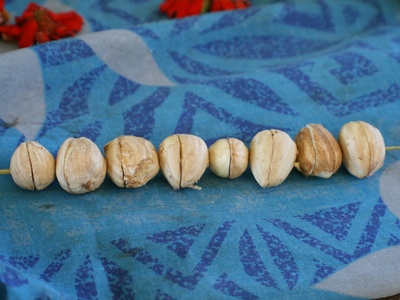
Nangai Nut
A large, spreading tree that produces a dark purple fruit containing a hard-shelled nut with a delicious, almond-like kernel.
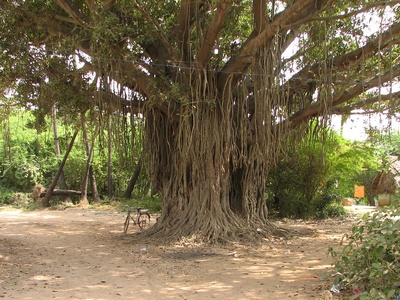
Banyan Tree
A massive fig tree with a wide canopy and incredible aerial roots that grow down to form new trunks, creating a forest-like appearance.

Sandalwood
A small, slow-growing parasitic tree prized for its fragrant heartwood, which retains its scent for decades.
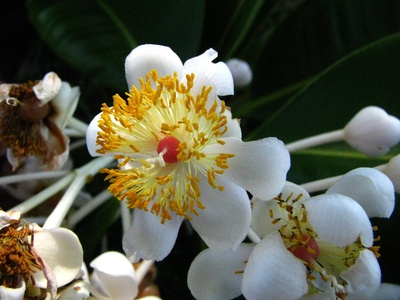
Tamanu
A large, broadleaf evergreen tree with a gnarled trunk, dark green leaves, and fragrant white flowers, often found lining the coast.
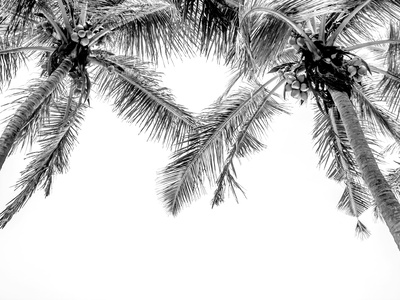
Coconut Palm
The iconic ‘tree of life’ in the Pacific, a tall, slender palm with a crown of large fronds, producing versatile and essential coconuts.
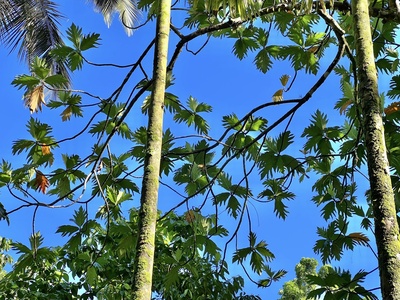
Breadfruit
A large tree with big, deeply lobed leaves that produces a large, round, green fruit with a potato-like texture when cooked.
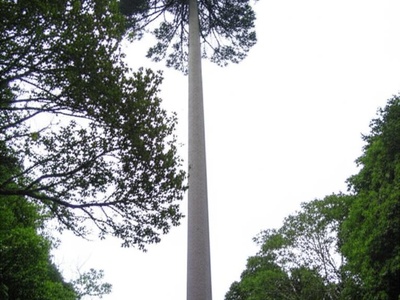
Vanuatu Kauri
A majestic, giant conifer endemic to Vanuatu, with a straight, columnar trunk that can reach up to 40 meters high.
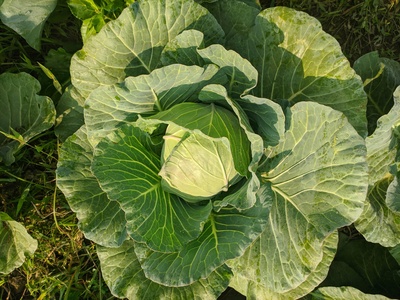
Island Cabbage
A fast-growing shrub with large, hibiscus-like leaves that are a key part of the local diet, similar to spinach.
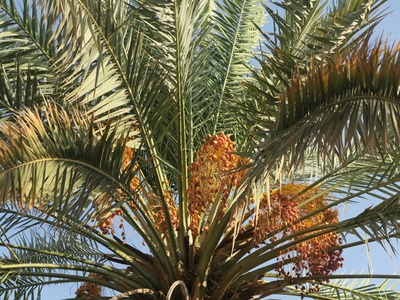
Natangura Palm
A type of sago palm that grows in dense stands, its large, tough fronds are expertly woven into roofing panels.
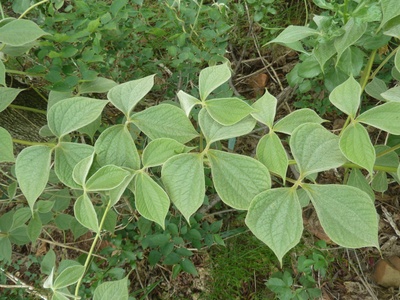
Wild Yam
A climbing vine with heart-shaped leaves, cultivated for its large, starchy underground tubers that come in many shapes and sizes.
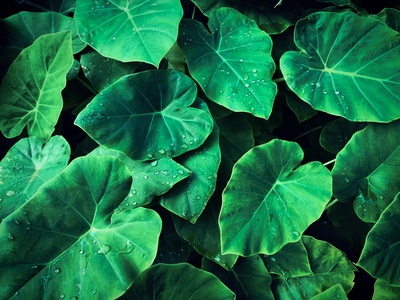
Taro
A leafy plant with large, heart-shaped ‘elephant ear’ leaves, grown in wet conditions for its edible, starchy corm.
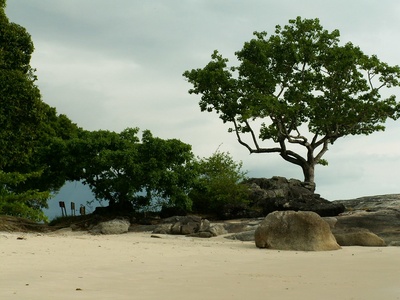
Burau
A sprawling, hibiscus-like tree that forms dense thickets along the coast, with distinctive heart-shaped leaves and yellow flowers.
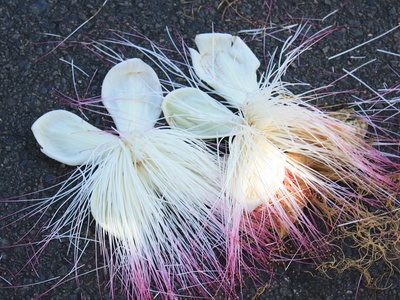
Fish Poison Tree
A beautiful coastal tree with large, glossy leaves and unique, puffy white flowers that open at night, producing a boxy, buoyant fruit.
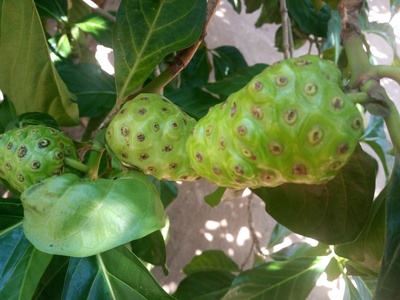
Noni
A small tree that produces a lumpy, greenish-white fruit with a strong, cheese-like odor, renowned for its medicinal properties.
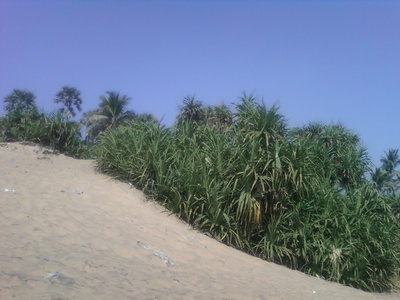
Pandanus
A distinctive tree or shrub that often grows on stilt-like prop roots, with long, spiny-edged leaves arranged in a spiral.
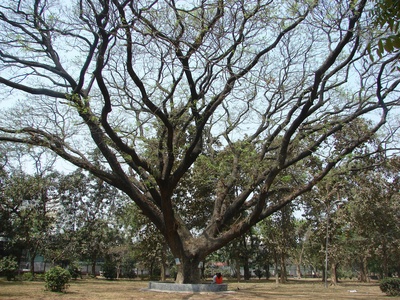
Nakamol Tree
A large rainforest tree with a buttressed trunk, its durable wood is perfect for crafting the large, shallow bowls used for mixing kava.
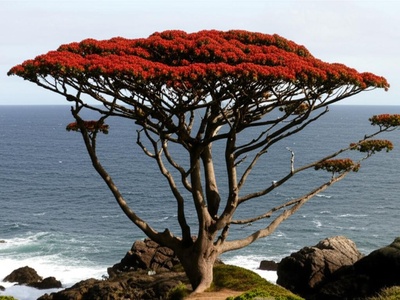
Natora
A large, spreading coastal tree with a distinctive tiered branching pattern, its leaves turn bright red before falling.
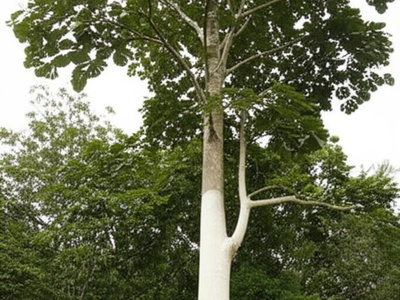
Nandao
A tall, straight tree with large, heart-shaped leaves, easily recognized by its whitish bark; it grows quickly in cleared areas.

Kwila
A large, buttressed rainforest tree known for its extremely hard, reddish-brown wood that bleeds a dark sap when cut.
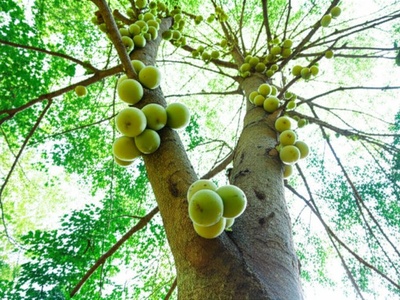
Taun
A large forest tree that produces bunches of round, fleshy fruit with a translucent pulp, a favorite among children and adults alike.
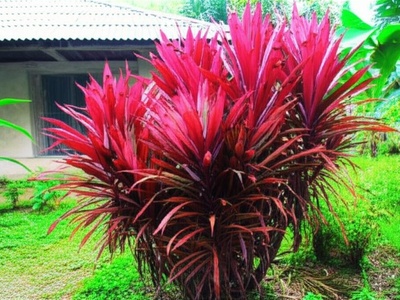
Nakangas
An upright, palm-like shrub with colorful leaves (often red, purple, or green) that is a fixture in every village and garden.
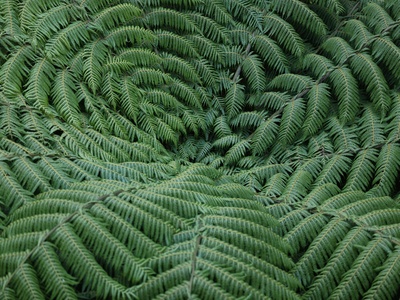
Tree Fern
An ancient plant with a thick, fibrous trunk topped by a crown of massive, feathery fronds, giving the rainforest a prehistoric feel.
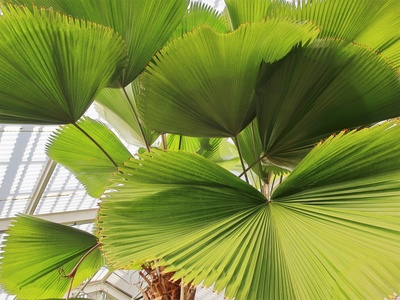
Vanuatu Fan Palm
A small, elegant palm with spectacular, undivided circular leaves that look like a perfectly pleated fan, making it a botanical jewel.
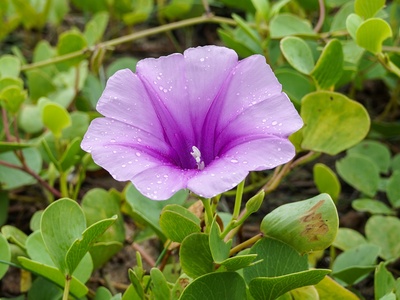
Beach Morning Glory
A creeping vine that spreads across sandy beaches, with distinctive goat-hoof-shaped leaves and bright pinkish-purple, trumpet-like flowers.
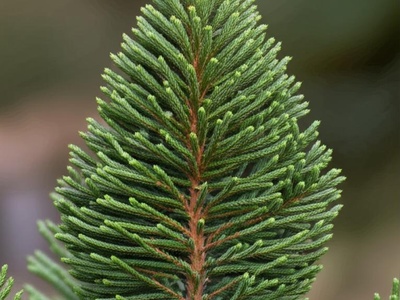
Nabil
A small to medium-sized tree that looks like a typical flowering tree but is actually a non-flowering gymnosperm, related to conifers.
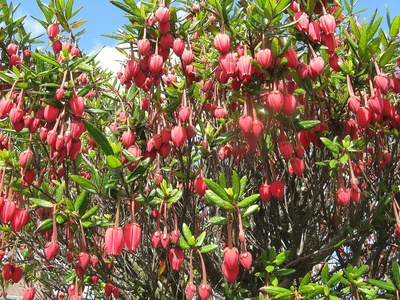
Lantern Tree
A coastal tree with large, rounded leaves that produces a unique fruit enclosed in a fleshy, lantern-like husk.
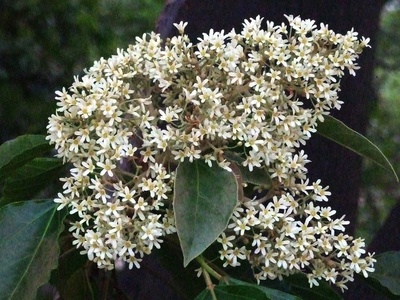
Candlenut Tree
A large tree with pale, star-shaped leaves, producing a hard-shelled nut whose oily kernel was a key source of light.
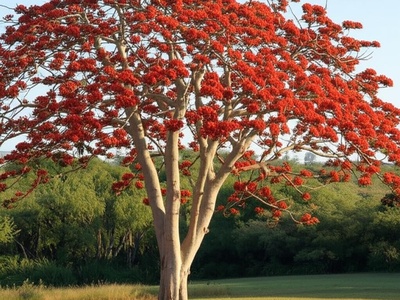
Nara Tree
A deciduous tree known for its thorny trunk and brilliant scarlet flowers that appear when the tree has no leaves.
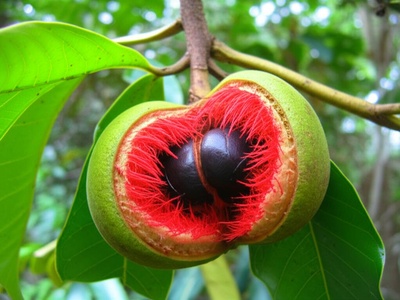
Wild Nutmeg
A rainforest tree related to the commercial nutmeg, producing a fruit that splits open to reveal a seed covered in a lacy red aril.
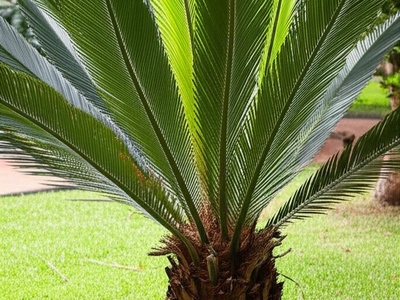
Vanuatu Cycad
A palm-like plant with a stout, woody trunk and a crown of stiff, pinnate leaves, representing an ancient lineage of plants.
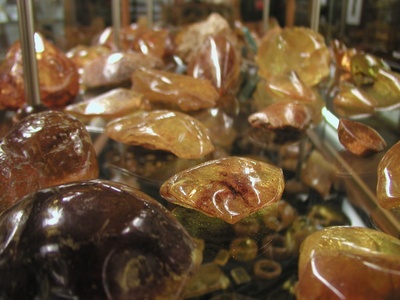
Kauri Gum Tree
A majestic and critically endangered kauri tree found only in the remote, high-altitude cloud forests of Espiritu Santo.
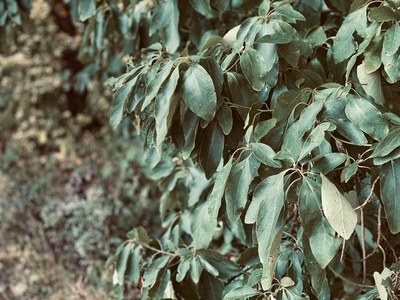
Soap Tree
A common pioneer tree with leaves that are green on top and silvery-white underneath, known for its practical use in daily hygiene.
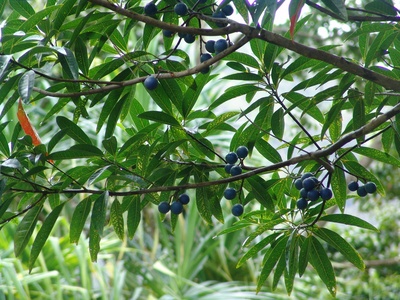
Blue Marble Tree
A tall rainforest tree famous for its striking, electric-blue fruit, which stands out against the green forest floor.
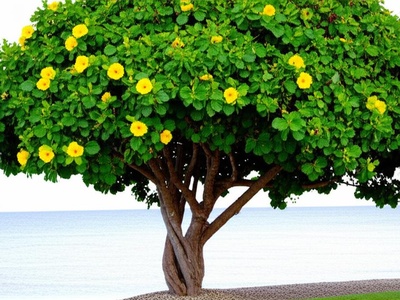
Milo
A medium-sized coastal tree with heart-shaped leaves and yellow, hibiscus-like flowers, valued for its fine-grained wood.
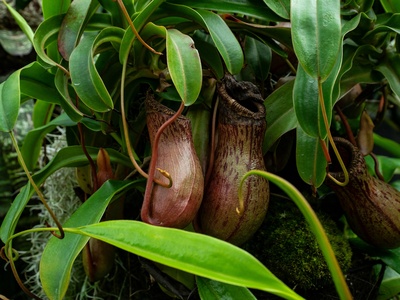
Vanuatu Pitcher Plant
A fascinating climbing plant found in specific habitats, known for its modified leaves that form a pitcher to capture insects.

Velvetleaf
A small, gnarled tree with branches covered in soft, silvery, velvety leaves, perfectly adapted to salty coastal conditions.
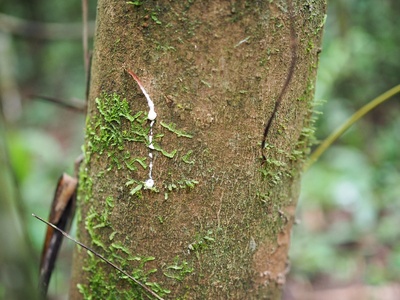
Poisonwood
A rainforest tree to be avoided, as its sap and even smoke from its burning wood can cause severe allergic reactions and blisters.
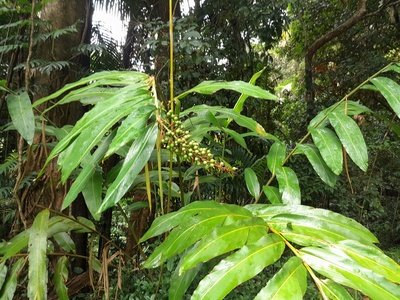
Native Ginger
A plant with lush, green leaves and often showy flowers, growing from an aromatic underground rhizome, similar to commercial ginger.
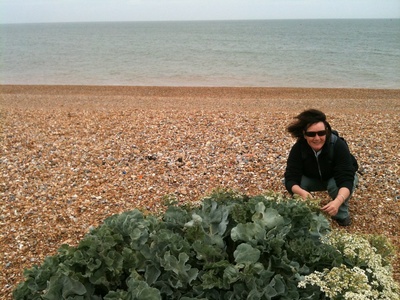
Beach Cabbage
A hardy, dense, light-green shrub found right on the edge of the beach, with distinctive flowers that look like they’ve been cut in half.
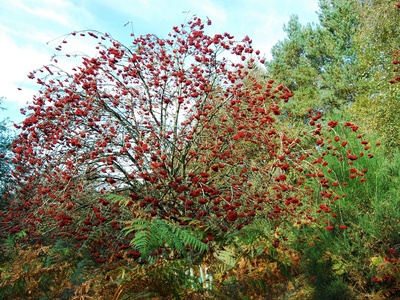
Red Bead Tree
A medium-sized tree that produces long seed pods which curl open to reveal stunning, vibrant red seeds that are as hard as stone.
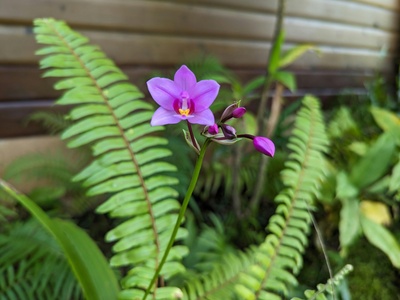
Wild Orchid
A diverse group of orchids, often with spectacular and intricate flowers, that grow on the branches and trunks of forest trees.
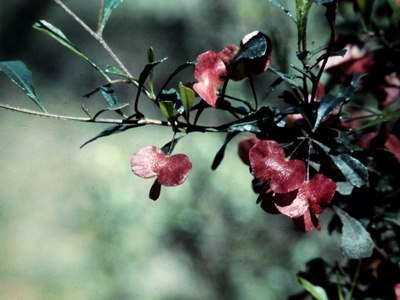
Sticky Hop Bush
A widespread, tough shrub or small tree with shiny, slightly sticky leaves and papery, wing-like fruit capsules.
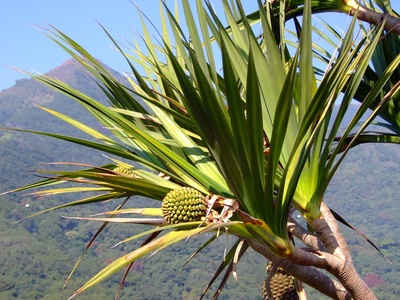
Common Screw Pine
A classic pandanus with a branching trunk and prominent stilt roots, featuring long, strap-like leaves used for countless purposes.
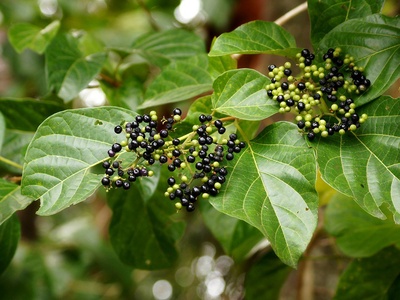
Creek Premna
A large shrub or small tree, often with a gnarled appearance, that has aromatic leaves and small, dark purple fruits.
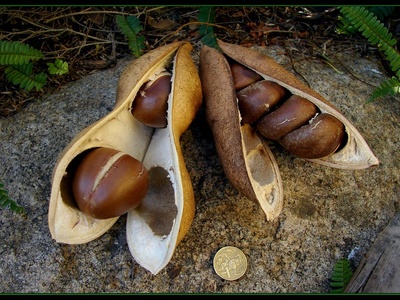
Puzzle Nut
A mangrove tree with a buttressed base, known for its unique, large round fruit that separates into irregular, woody sections.

Native Mulberry
A fast-growing small tree or shrub with leaves that are silvery-white on the underside, a key source of high-quality natural fiber.
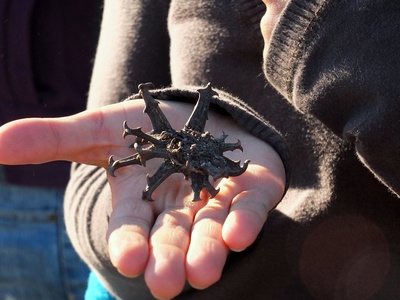
Devil’s Claw
A scrambling, prickly vine that forms impenetrable thickets, producing a spiny pod containing one or two hard, grey, marble-like seeds.
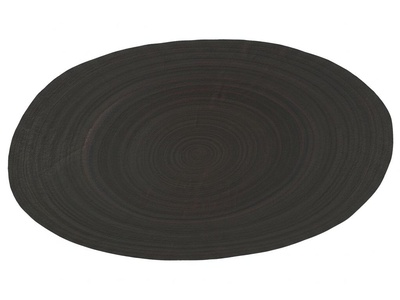
Vanuatu Ebony
A forest tree known for its very hard, dark-colored heartwood, valued by local carvers for its strength and color.
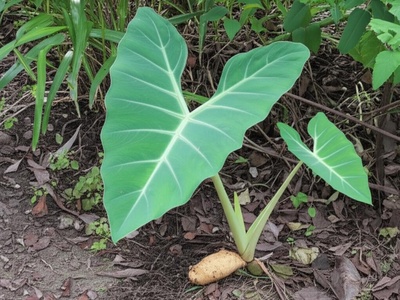
Polynesian Arrowroot
A unique plant with a large, deeply divided leaf on a single stalk, producing a starchy tuber that was a traditional food source.
